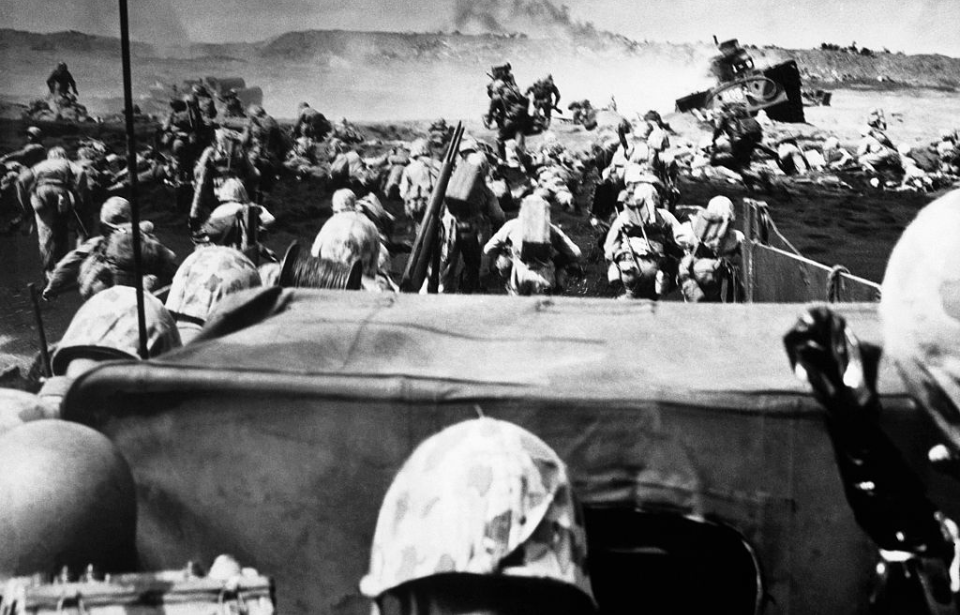Battle of Iwo Jima: One of the Bloodiest Battles in US Marine Corps History
Photo Credit: National Archives / CORBIS / Getty Images
As dawn broke on February 19, 1945, a small volcanic island in the Pacific Ocean became the stage for one of World War II’s most ferocious engagements. The United States needed Iwo Jima for use as a base for fighter aircraft and an emergency landing site for bombers, and the battle would serve as a symbol of American grit and the US Marine Corps’ valor.
Strategic importance of Iwo Jima
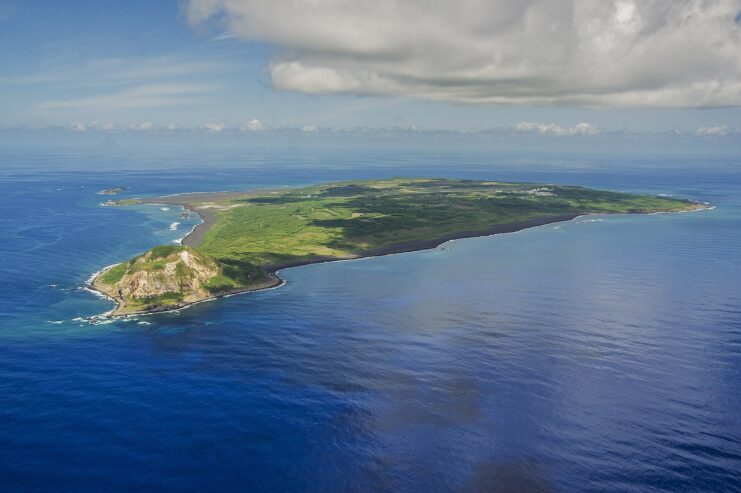
Iwo Jima, 2014. (Photo Credit: Mass Communication Specialist 1st Class Trevor Welsh / U.S. Navy / Wikimedia Commons / Public Domain)
Iwo Jima’s location, halfway between Japan and the Mariana Islands, made it a crucial target for the United States. Not only was it imperative that the American forces take the island to stop the enemy forces from intercepting their Boeing B-29 Superfortress bombers on runs, but control would provide the US Army Air Forces (USAAF) with a base from which pilots could launch attacks on the Japanese mainland and escort bombers on long-range missions.
The Japanese, aware of the island’s strategic importance but not certain an attack would occur, had fortified it with a vast network of bunkers, tunnels and artillery positions. This was unbeknownst to the Americans, who’d embarked on a relentless bombing campaign against Iwo Jima and believed they’d crippled the forces stationed there. This led key figures to believe a battle would take only a few days.
A fierce Japanese defense and the American Assault
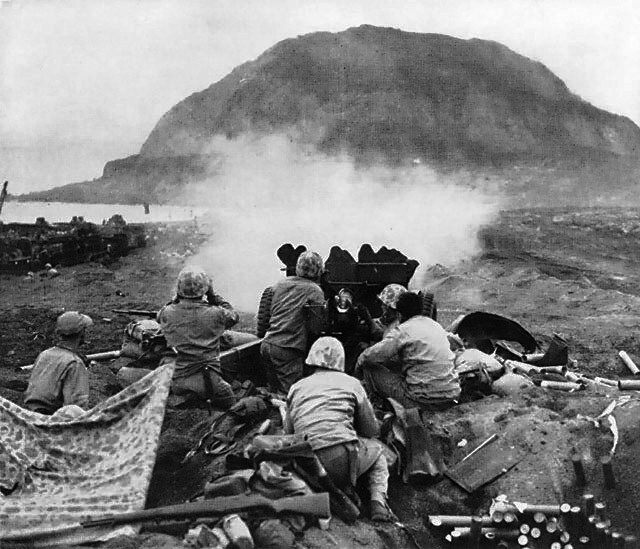
US Marines firing a 37 mm gun at cave positions on Iwo Jima, 1945. (Photo Credit: ibiblio / Wikimedia Commons / Public Domain)
At 9:00 AM on February 19, 1945, some 30,000 US Marines landed on the shore of Iwo Jima, launching the battle, officially codenamed Operation Detachment. Almost immediately, struggles arose, with the troops faced with a hellish landscape of fire and ash, meaning every inch of the ground had to be taken at a tremendous cost.
The Japanese defense of Iwo Jima was tenacious – and extensive. Under the leadership of Lt. Gen. Tadamichi Kuribayashi, the Japanese constructed an intricate defense system designed to inflict maximum casualties. This included laying anti-ship and -tank mines along the beach, as well as depth charges and torpedo heads. Aerial kamikaze attacks were also an integral part of the defensive strategy, intended to destroy as many US Navy vessels as possible.
As the Americans trudged through the ashy sand, the Japanese began firing, following this barrage up with a banzai charge. By the end of the first day, they’d seized part of Iwo Jima’s airfields, albeit after suffering heavy casualties.
The fighting overall lasted 36 days, with most of the Japanese resistance coming from underground. As the Marines continued to move inland, the enemy realized an American victory was inevitable. That didn’t mean, however, that they wouldn’t make it as difficult as possible. This was particularly evident in the action to take Airfield No. 2, which proved to be the most fortified section of Iwo Jima.
On March 25, the last banzai attack was launched by the Japanese, which, while inflicting severe casualties, ultimately failed. Despite fighting continuing to rage in the subsequent weeks as the Americans looked for Japanese holdouts, the US military declared Iwo Jima captured the following day.
Demonstrating extraordinary valor during the Battle of Iwo Jima
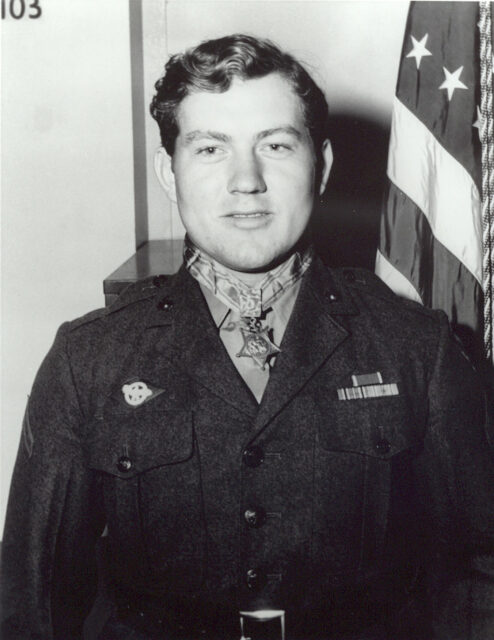
Pfc. Jacklyn H. Lucas. (Photo Credit: ERcheck / Wikimedia Commons / Public Domain)
The Battle of Iwo Jima was characterized by brutal fighting conditions. The volcanic ash on the island made movement difficult, and the Japanese defense was relentless. Despite the hardships, American servicemen displayed extraordinary valor. A total of 27 Medals of Honor were issued following the engagement: 22 to Marines and five to sailors.
Among those to receive the distinction was Pfc. Jacklyn H. Lucas who, at just 17 years old and with complete disregard for his own life, used his body to cover two Japanese grenades, one of which detonated. Miraculously, he survived. Following his discharge, he tried his hand at civilian life, before enlisting in the US Army as a paratrooper. Unbelievably, he experienced another near-death event when his parachute malfunctioned during training.
Another, Pfc. William R. Caddy, gave his life to save those of his platoon leader and sergeant by using his body as a shield against a grenade blast. His mother was presented with the Medal of Honor on his behalf.
Raising the flag on Mount Suribachi
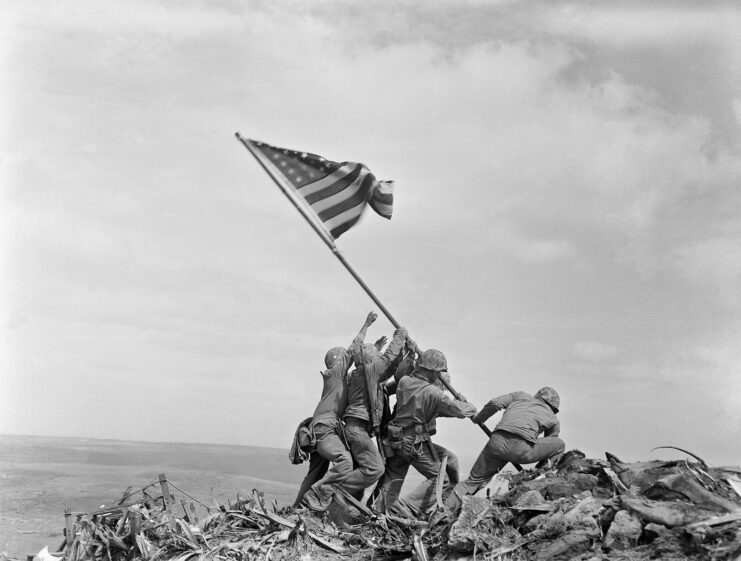
Raising the Flag on Iwo Jima, 1945. (Photo Credit: Joe Rosenthal / Associated Press / Wikimedia Commons / Public Domain)
One of the most enduring images of the Second World War is the photograph of six US Marines raising the American flag atop Mount Suribachi. This moment, captured by Associated Press photographer Joe Rosenthal on February 23, 1945, became a symbol of hope and determination; it signified not only the capture of Iwo Jimas’s highest point after a hard-fought battle, but also the resilience of the American spirit.
There were actually two flag raisings that day. The first was erected by the men of the 2nd Battalion, 28th Marine Regiment, who were commanded by 1st. Lt. Harold G. Schrier. The latter and two others attached the American flag to an iron water pipe found at the top of the summit, before pushing it into the ground at 10:30 AM. The moment was captured by Staff Sgt. Louis R. Lowery.
The second flag raising is the most famous, and was conducted by Cpl. Harlon Block, Cpl. Harold Schultz, Cpl. Harold Keller, Sgt. Michael Strank, Cpl. Ira Hayes and Pvt. Franklin “Frank” Sousley. Rosenthal captured it after scaling Mount Suribachi, and he won the Pulitzer Prize in 1945 for the snap.
The flag-raising wasn’t only a morale booster for the troops on Iwo Jima, but also for the American public back home. The image was used in war bond drives and quickly became a patriotic symbol. It represented the progress in the Pacific and the inevitable march toward victory over Japan.
High casualties were suffered during the Battle of Iwo Jima
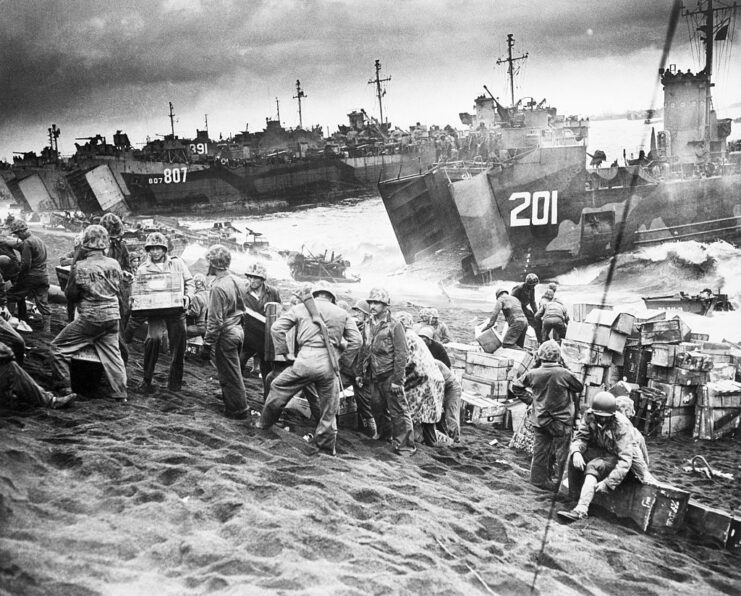
US Navy landing craft bringing supplies onto the shores of Iwo Jima, 1945. (Photo Credit: Bettmann / Getty Images)
The Battle of Iwo Jima stands as one of the bloodiest battles in the history of the US Marine Corps., and the cost of victory was steep. The United States suffered over 26,000 casualties, including 6,825 dead – a significant total of the 70,000 US Marines who participated in the engagement.
The Japanese losses were even higher, with only about 1,000 of the 22,000 defenders, the majority of them draftees, surviving the battle. Of that total, just 216 were taken prisoner, with the rest believed to have taken their own lives. Two men, Matsudo Linsoki and Yamakage Kufuku, held out on Iwo Jima for years, only surrendering on January 6, 1949.
Implications for the final stages of World War II
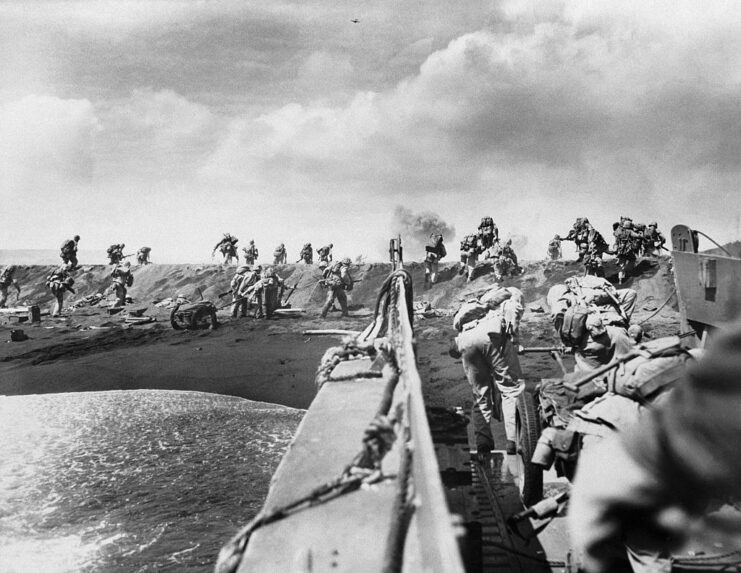
US Marines landing on Iwo Jima, 1945. (Photo Credit: Bettmann / Getty Images)
The capture of Iwo Jima had significant implications for the final stages of World War II. It provided the US military with a base for fighter escorts and emergency landings, which was instrumental in the air campaign against Japan. The island also served as a staging area for the eventual invasion of Okinawa, the last major battle of the Pacific Theater.
The success at Iwo Jima allowed for an intensification of the bombing campaign against the Japanese mainland, bringing the war closer to its conclusion. During the fighting, air raids were conducted over Tokyo as part of Operation Meetinghouse, resulting in upwards of 130,000 civilian deaths.
The Battle of Iwo Jima also served as a grim reminder of the potential human cost of an invasion of Japan itself. The proposed plan, known as Operation Downfall, was ultimately replaced by the decision to drop two atomic bombs – one on Hiroshima on August 6, 1945, and the other on Nagasaki three days later.
The mass death toll and destruction ultimately led to Japan’s surrender, ending the Second World War.
Letters from Iwo Jima and Flags of Our Fathers (2006)
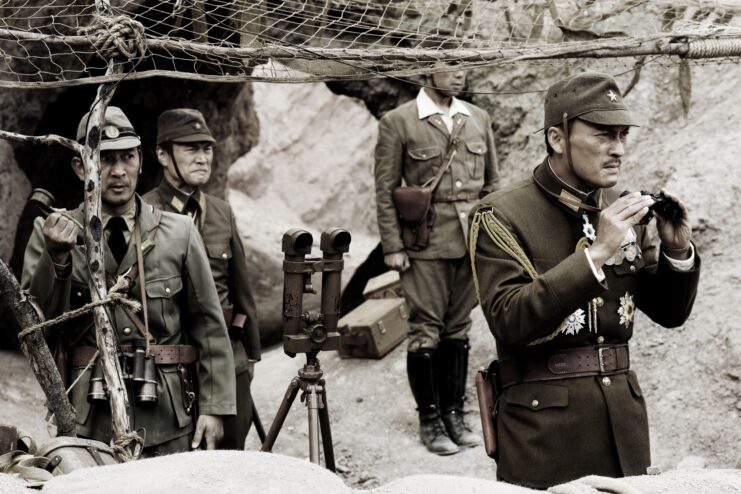
Letters from Iwo Jima, 2006. (Photo Credit: bilbo / Warner Bros. / Paramount Pictures / Dreamworks Pictures / MovieStillsDB)
In 2006, Clint Eastwood released two films about the Battle of Iwo Jima, Letters from Iwo Jima and Flags of Our Fathers. The pair present the engagement from both sides and were met with critical acclaim.
Adapted from James D. Bradley and Ron Powers’ book, Flags of Our Fathers explores the events surrounding the raising of the American flag on Iwo Jima. The movie delves into the subsequent fame and scrutiny faced by the individuals involved, narrated from the perspectives of three troops – John Bradley, Rene Gagnon and Ira Hayes – who embark on a national tour to raise funds for the war effort.
In a parallel narrative, Letters from Iwo Jima recounts the viewpoint of the Japanese forces. The focus is on Tadamichi Kuribayashi. Through letters, the movie covers the personal struggles, fears and sense of duty of the Japanese fighters.
The two together present a more rounded representation of the Battle of Iwo Jima, one that had never before been seen on the big screen. For this, they were nominated for – and won – several honors, including Golden Globes, Oscars, Critics’ Choice Awards and the 2007 Cinema for Peace Award for the most valuable film of the year.
